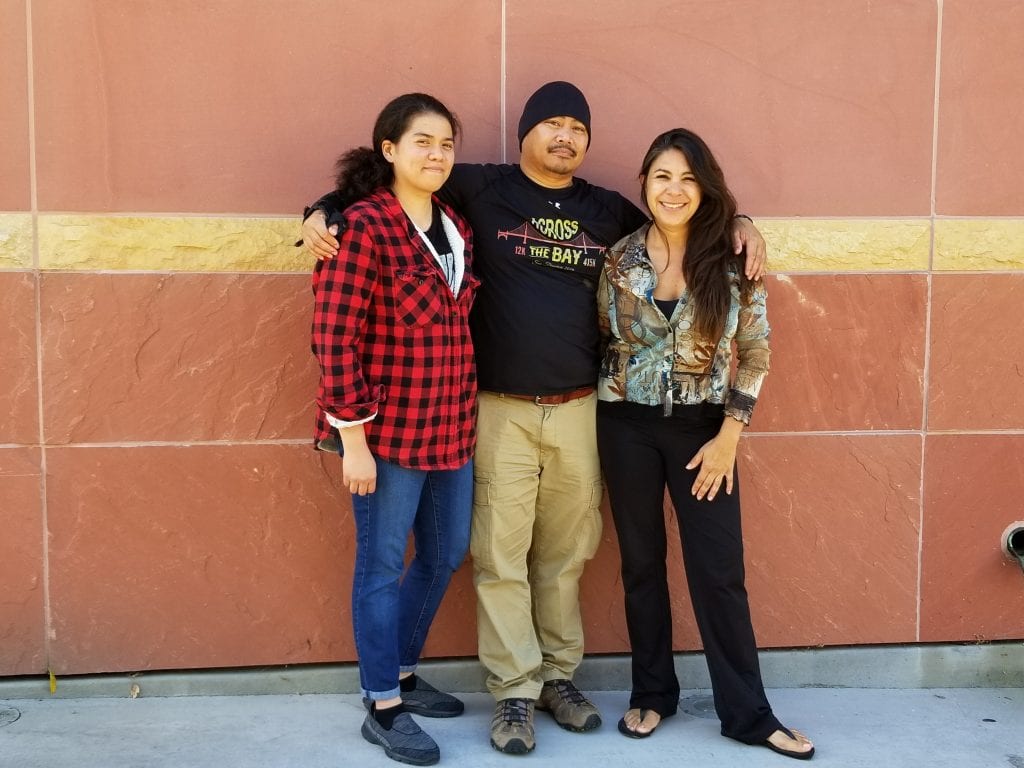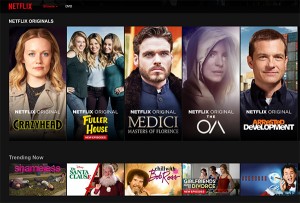SJSU Student Research Competition 2017 and University Student Research Forum
Undergraduate and graduate research students have the opportunity to present their work and compete for selection as SJSU representatives at the annual CSU Student Research Competition at California Polytechnic State University, San Luis Obispo. Applications are made to the appropriate college and each college submits their selections to the Office of Research. Details about the competition follow and can also be found at the following link: http://www.sjsu.edu/research/student-research-competition/. A PDF copy of this announcement with instructions can be found at: General Description and Information for 2017 Competition.
Timeline
Each college established its own deadline for receipt of the nominations from its faculty, included below.
College of Applied Sciences and Arts (CASA) – Application packets should be submitted to the CASA Dean’s Office, MH 431, by 5 p.m., on Monday, Feb. 6, 2017.
Lucas College and Graduate School of Business – Application packets should be submitted to the Business Dean’s Office, BT 950, by 4 p.m., on Monday, Feb. 6, 2017.
Connie L. Lurie College of Education – Application packets should be submitted to the Education Dean’s Office, SH 103, by 5 p.m., on Friday, Feb. 10, 2017.
Charles W. Davidson College of Engineering – Application packets should be submitted to the Engineering Dean’s Office in care of Teresa Mercure, ENG 493, by 4 p.m., on Monday, Feb. 6, 2017.
College of Humanities and the Arts – Application packets should be submitted to the Humanities and the Arts Dean’s Office, WSQ 120, by 5 p.m., on Monday, Feb. 13, 2017.
College of Science – Application packets should be submitted to the Science Dean’s Office, SCI 127, by 4 p.m., on Monday, Feb. 6, 2017.
College of Social Sciences – Application packets should be submitted to the Social Sciences Dean’s Office, WSQ 103, by 5 p.m., on Friday, Feb. 10, 2017.
Feb. 20, 2017 – Colleges send electronic copy of completed student delegate registration form and 5-page summary for each student to gilles.muller@sjsu.edu or deliver a hard copy to the Office of Research (ADM 223B). Student teams must submit individual registration forms for each one of its members.
March 1 and 2, 2017 – Student presentation of research and subsequent selection of SJSU finalists.
March 17, 2017 – SJSU Office of Research submits SJSU finalist list to California Polytechnic State University, San Luis Obispo.
April 28 and April 29, 2017 – CSU Student Research Competition at California Polytechnic State University, San Luis Obispo.
Application
The student registration form for nomination of students from each college to participate in the SJSU Student Research Competition can be found at the following link: Application Form for 2017 Competition. Attach this registration form to a written summary of the research. The rules governing the written summary are as follows:
– The summary must include the names(s) of the student(s) and the title of the presentation.
– The narrative may not exceed five double-spaced pages. Use fonts and margins that ensure legibility.
– Appendices (bibliography, graphs, photographs, or other supplementary materials) may not exceed three pages.
– Research that has human or animal subjects involvement must have appropriate institutional review.
Each college may send forward a total of FOUR student projects (undergraduate and/or graduate) representing outstanding research or creative activity. Students eligible to compete at SJSU and at the CSU-wide competition at California Polytechnic State University, San Luis Obispo, are undergraduate and graduate students currently enrolled or those who graduated in May 2016, August 2016 or December 2016. The research presented should be appropriate to the student’s discipline and career goals. Proprietary research is excluded.
Divisions of Competition
Divisions of competition have been defined by CSU-wide procedures and the CSU-defined divisions are indicated below:
Group A Group B
Behavioral and Social Sciences Biological and Agricultural Sciences
Business, Economics, and Public Administration Engineering and Computer Science
Creative Arts and Design* Health, Nutrition, and Clinical Sciences
Education Physical and Mathematical Sciences
Humanities and Letters
Interdisciplinary Majors
*Creative projects are welcome, see SJSU Oral Presentation section for more information.
SJSU Oral Presentation
Student research will be presented on March 1 and 2, 2017, from 1:30 to 6 p.m. (or as the number of eligible participants dictate) in IRC 101. This event is not open to the public. See the Open House Celebration section for the event open to the campus constituency. Students in Group B will make their presentations on March 1; those in Group A will present on March 2. Each student or multi-student group will have 10 minutes to present her or his research orally and five minutes to listen and respond to juror and audience questions. Students are encouraged to use delivery techniques that promote interaction with the audience. All entrants may use audio visual materials as appropriate. An entrant in the Creative Arts and Design category may present an audio and/or visual record of a performance s/he has given or a work s/he created; the oral presentation should focus on the rationale and historical context underlying the student’s interpretation of the material. Successful students in previous years often have been those who practiced with their advisors or other faculty and students. It is expected that students will not make oral presentations by simply reading directly from their research summaries.
Research Summary and Oral Presentation Evaluation Criteria
The University Graduate Studies & Research Committee will evaluate the research summary and the oral presentation to identify finalists for the CSU-wide competition using the same evaluation criteria that will be used in the CSU-wide competition. The evaluation criteria are as follows:
– Clarity of purpose
– Appropriateness of methodology
– Interpretation of results
– Value of the research or creative activity
– Ability of presenter to articulate the research or creative activity
– Organization of the material presented
– Presenter’s ability to handle questions from the jury and general audience.
After the event, Associate Dean Gilles Muller in the Office of Research can provide feedback to each student (or each group) on her/his presentation if requested.
Open House Celebration
The 38th SJSU Annual University Research Forum sponsored by the SJSU Research Foundation and the Office of Research will be held on Wednesday, April 5, 2017, in Engineering 285/287. Refreshments will be served. The Forum will be a celebration for students who have been selected to represent San José State University at the 31st Annual CSU Student Research Competition. At this event, SJSU finalists will receive a small monetary award that can be used to defray students’ basic travel expenses to the CSU statewide competition. Finalists in a multi-student research group have the one monetary award amount split equally between all group members. The Forum will also recognize the faculty mentors of selected students by the presentation of Distinguished Faculty Mentor awards. At the Forum, finalists will be available to discuss their research at a poster session; family and friends are invited to attend.
CSU Statewide Competition
The 31st Annual CSU Student Research Competition will be held April 28 and 29, 2017, at California Polytechnic State University, San Luis Obispo. The competition is held to promote excellence in undergraduate and graduate scholarly research and creative activity by recognizing outstanding student accomplishments throughout the twenty-three campuses of the California State University. Evaluation criteria to be used is the same as the evaluation criteria shown above except the jurors will be comprised of experts from corporations, foundations, public agencies, and colleges and universities in California. There will be separate undergraduate and graduate divisions for each category (listed in Divisions of Competition section) unless a division has four or fewer entrants, in which case undergraduate and graduate divisions may be combined. The California Polytechnic State University, San Luis Obispo, steering committee reserves the right to combine or subdivide the categories or to move an entrant from one category to another, as numbers of submissions necessitate. Based on the recommendations of the jurors, cash awards will be provided to the outstanding presenter and the runner-up in both the undergraduate and graduate divisions of each category. If the undergraduate and graduate divisions of a category have been combined because there are fewer than four presenters in one division, awards will be provided to the outstanding presenter and the runner-up without regard to class standing. In the event there are five or fewer presenters in a session, only the outstanding presenter will receive an award.
If you have questions about the SJSU Student Research Competition, please contact the Office of Research in care of Gilles Muller at 408-924-2632 or gilles.muller@sjsu.edu. For any matters related to the Forum, please contact the SJSU Research Foundation in care of Brenda Swann at 408-924-1414 or brenda.swann@sjsu.edu.



